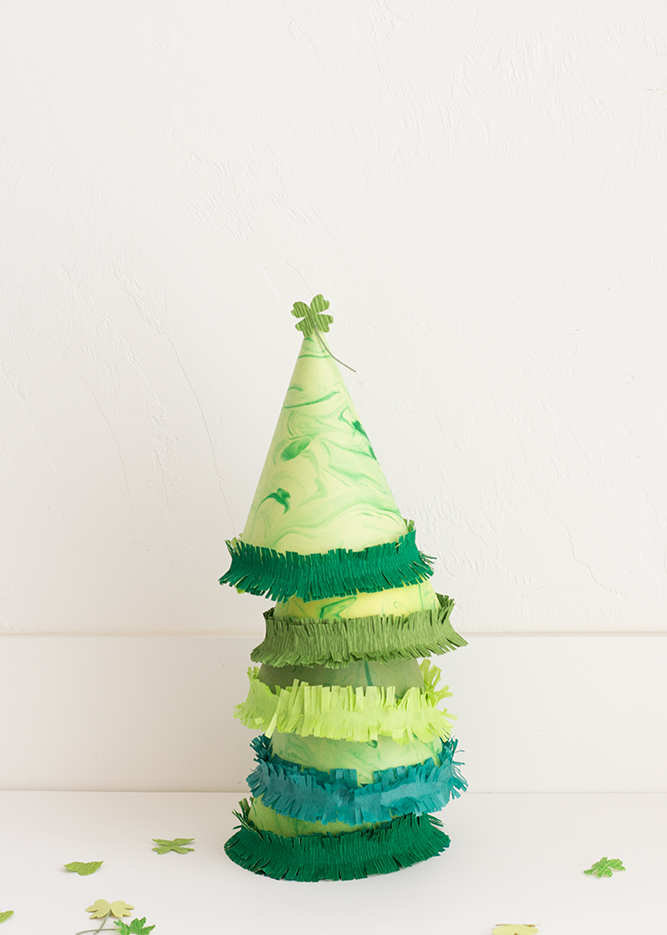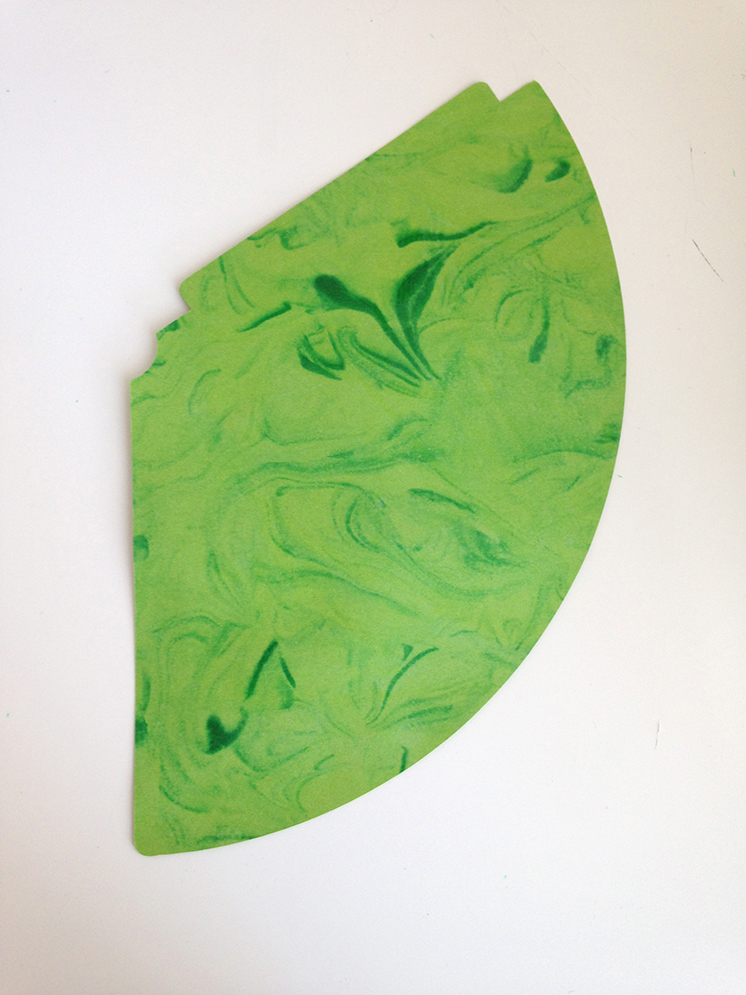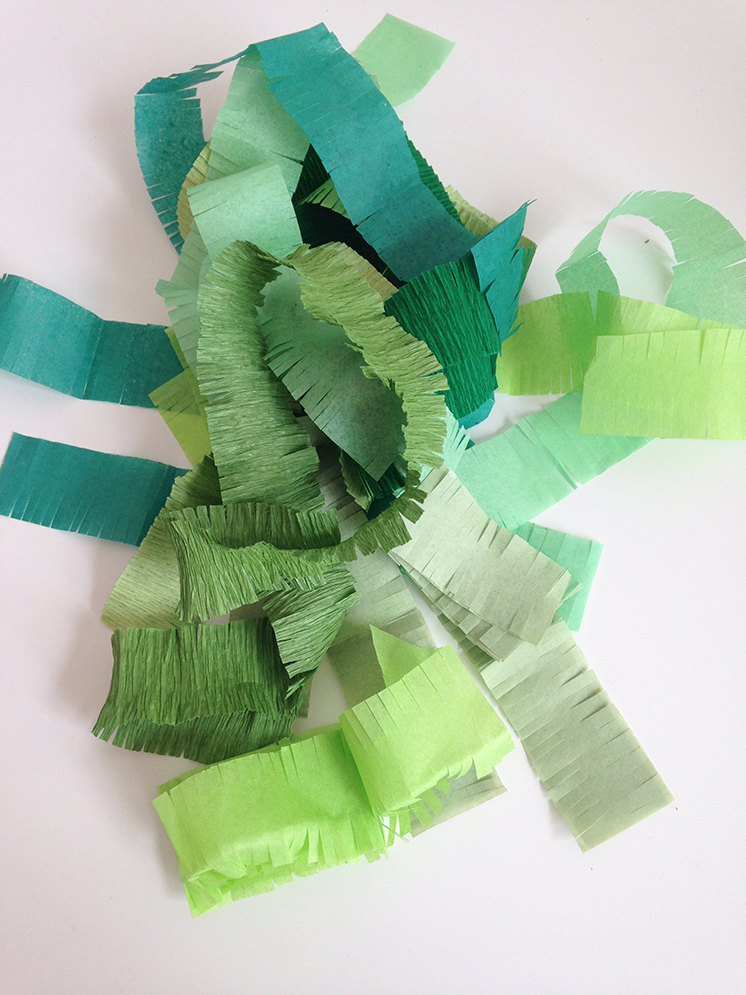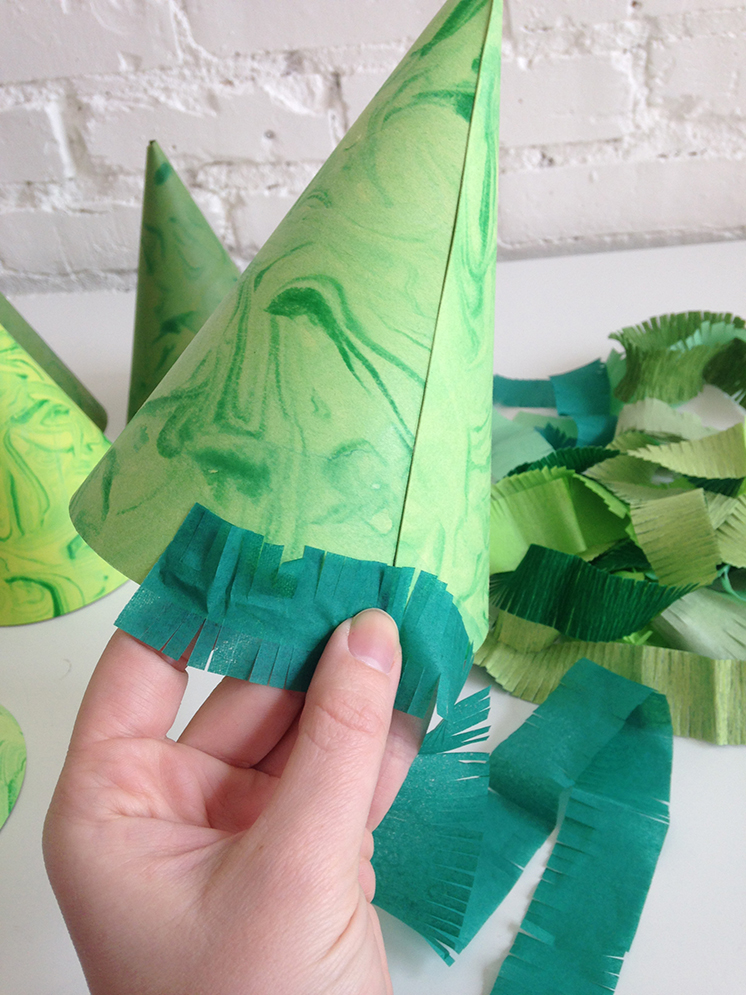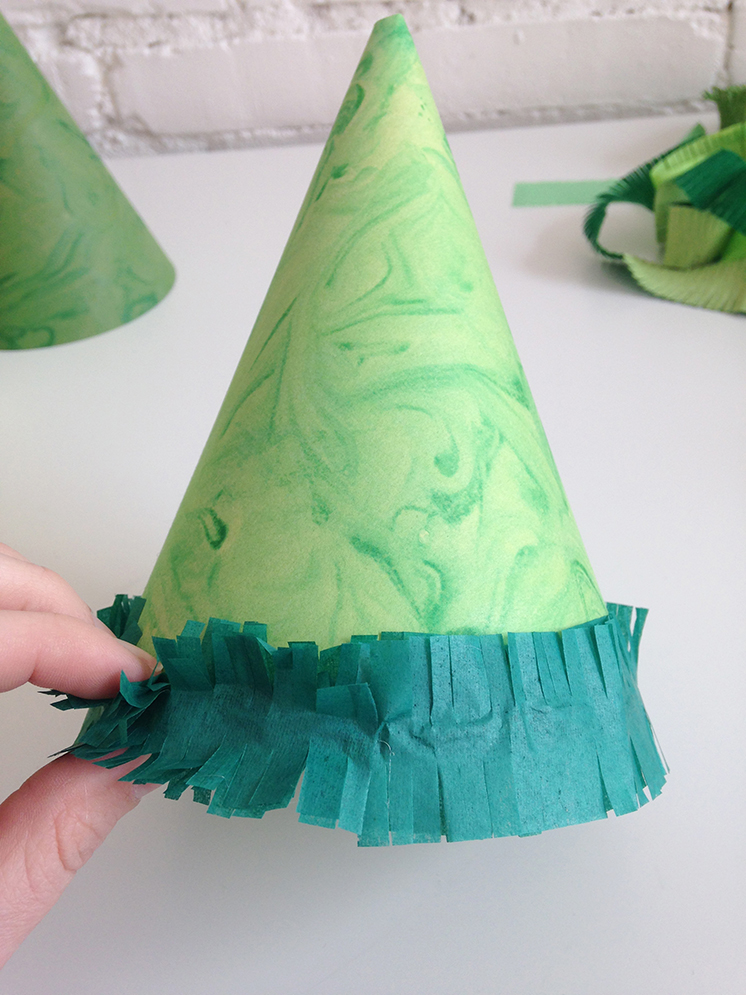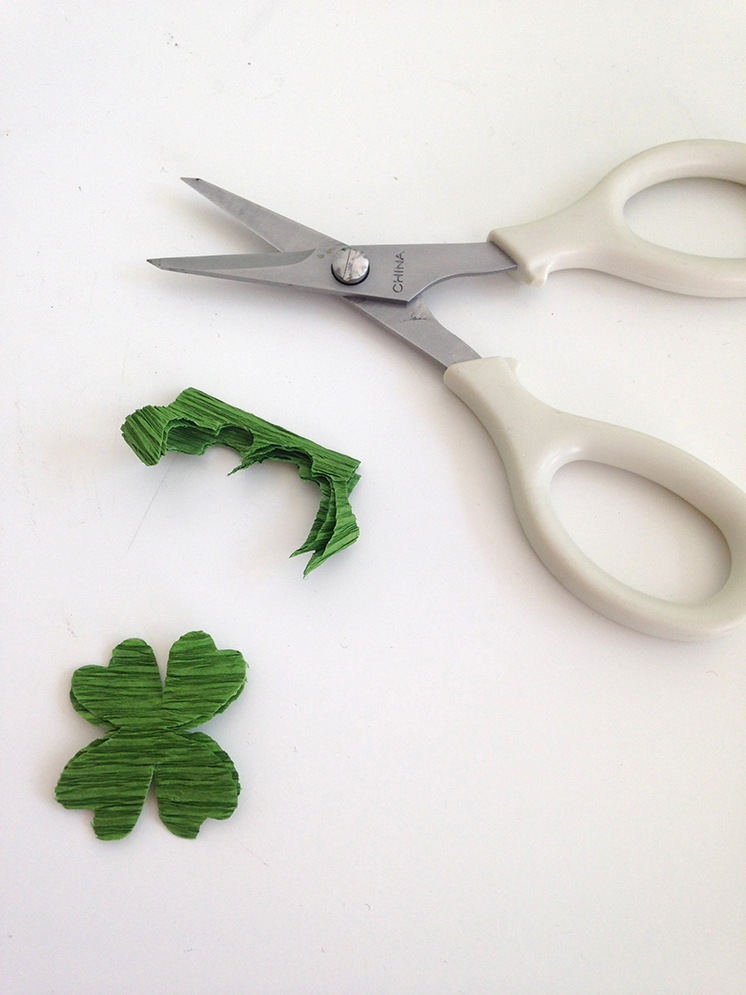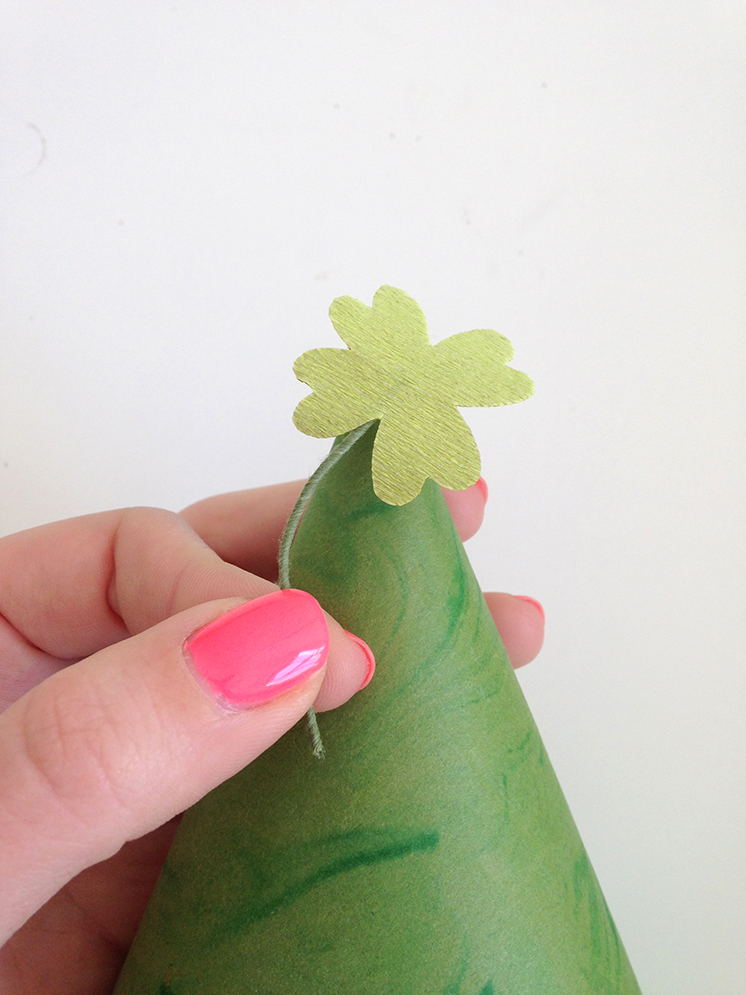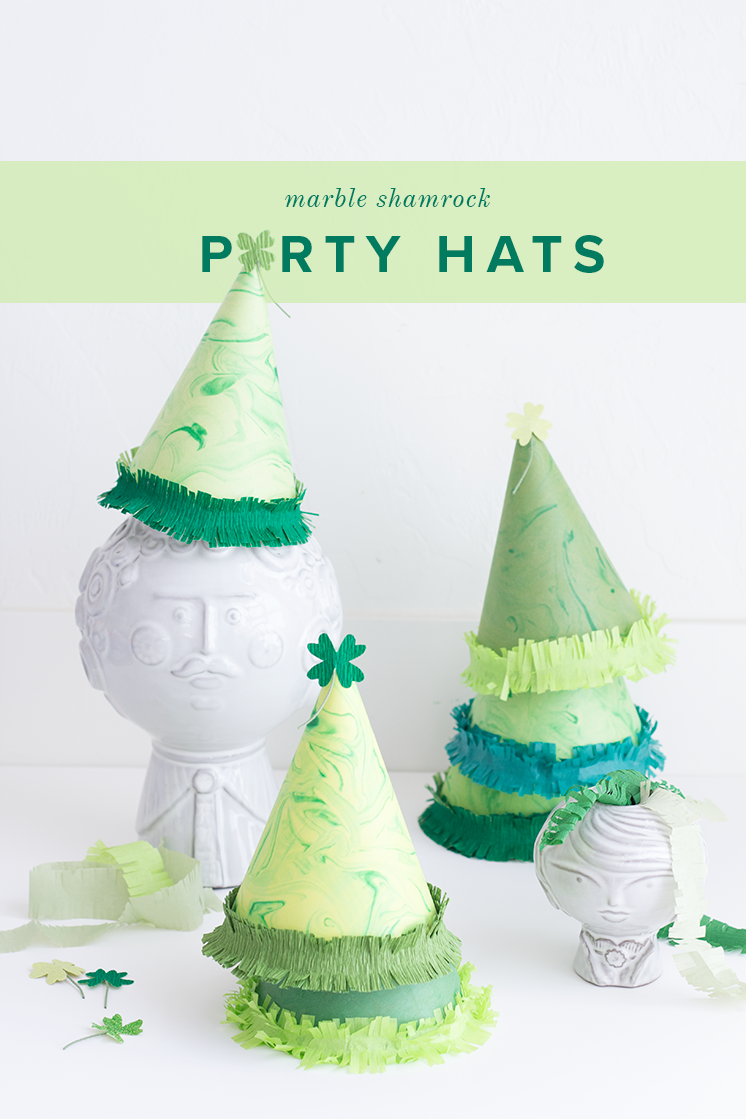
How are you celebrating St. Patricks’ Day this year? With a party? Do you need some hats? We got ’em! These DIY St. Patrick’s Day marbled shamrock party hats are surprisingly easy to make and you’ll never guess how we made them. Hint: someone in your house probably has it in their medicine cabinet.
DIY marbled shamrock party hats
Materials:
-
- green card stock
- foam shaving cream
- green food coloring
- craft sticks
- wax paper
- scissors
- green tissue paper
- green crepe paper
- green covered floral wire
- wire cutters
- glue
- glue gun
- hole punch
- ribbon or elastic
- template or SVG file and craft cutting machine
- iron
Steps:
Step 1. Marble your green card stock. To do this, lay out a sheet of wax paper and cover the surface with foaming shaving cream (the cheap stuff works great). Drop green food coloring onto the shaving cream and drag a craft stick around in the shaving cream to create a marbled pattern with the food coloring. Press the craft paper into the shaving cream. Peel craft paper back and wipe excess shaving cream off of the paper with the edge of another craft stick. You can use the same shaving cream and add more food coloring for several sheets of card stock. Allow card stock to dry completely. If card stock ripples you may want to iron it on a low setting to flatten it.
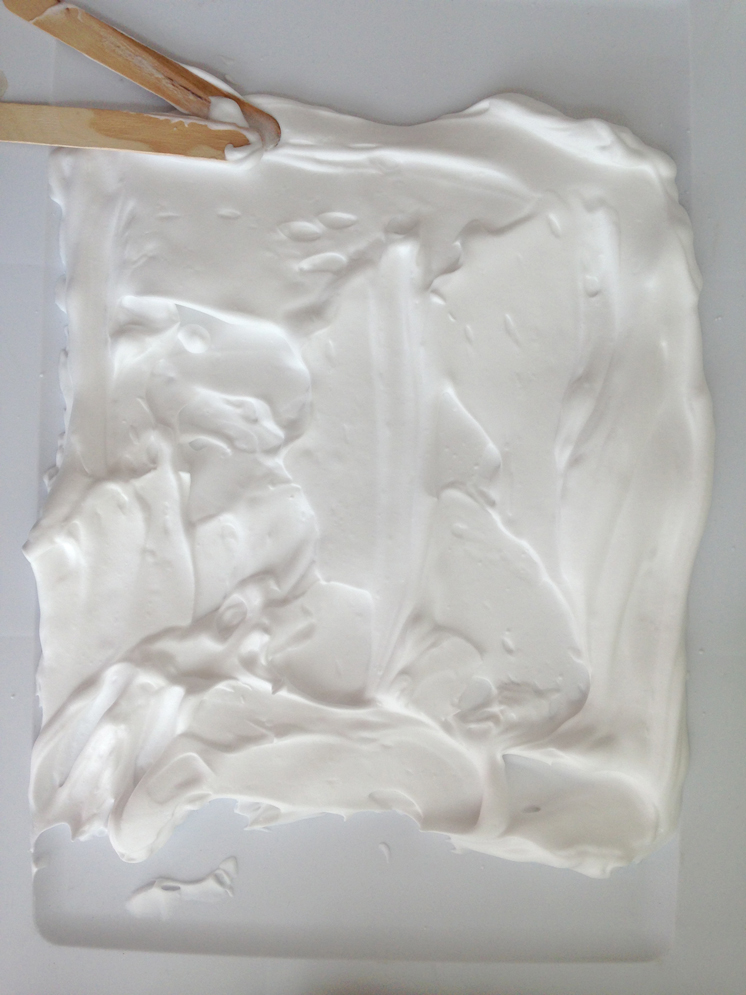
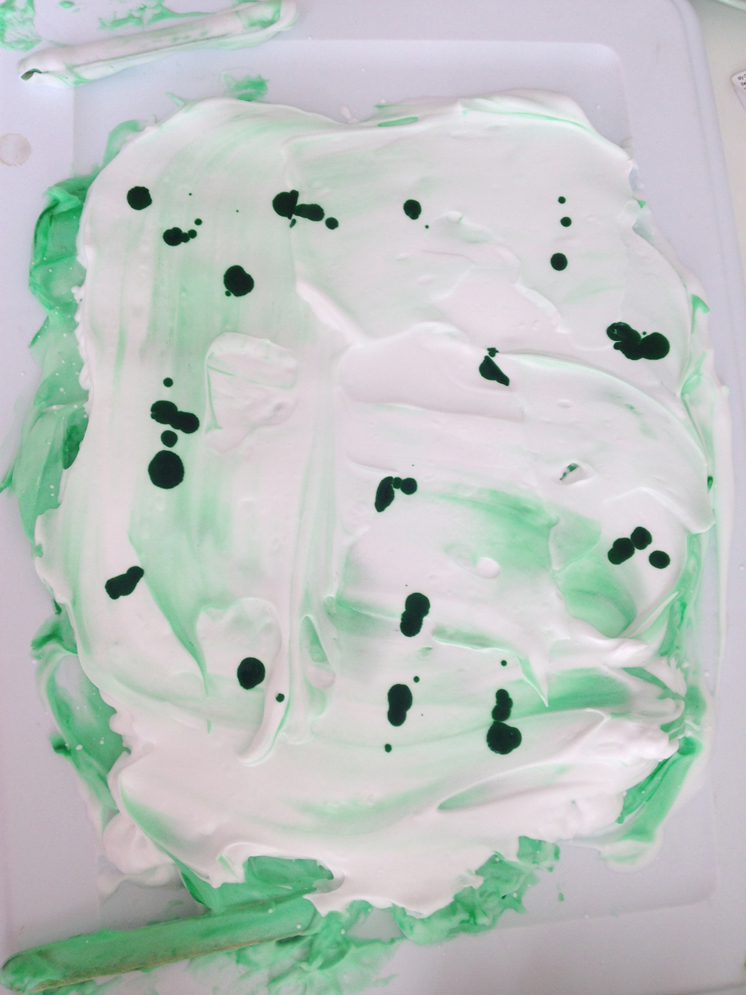
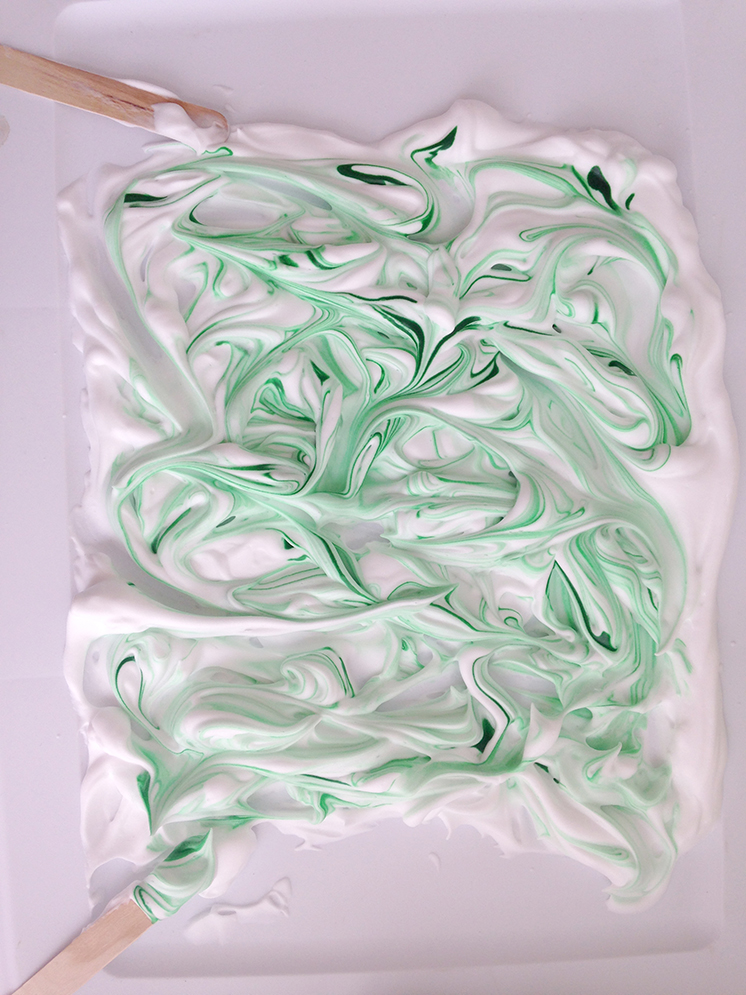
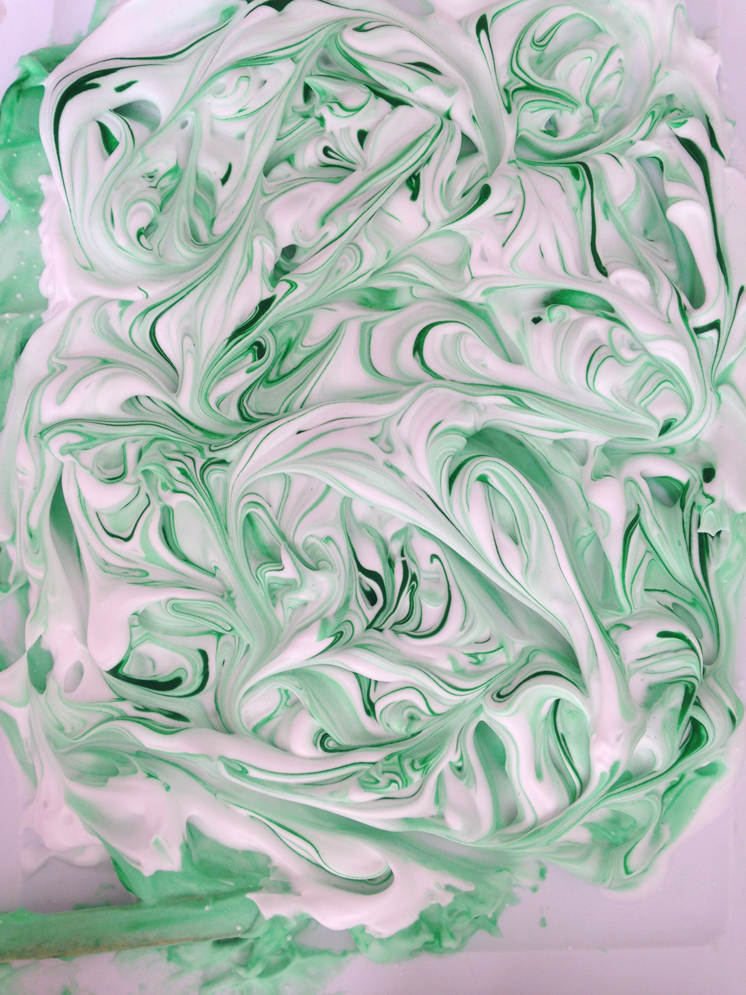
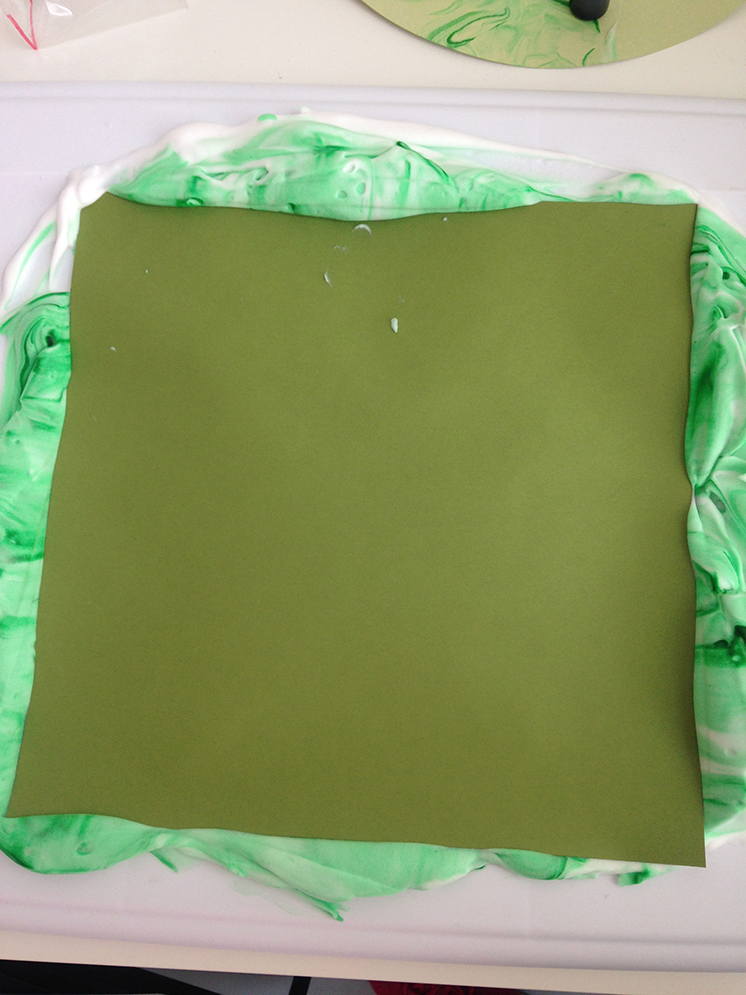
Step 2. Use template or craft machine to cut party hats out of marbled card stock. Assemble hats using hot glue to keep tab in place.
3. Cut and fringe 1.5 inch strips of tissue paper and/or crepe paper. Glue fringed strips around the bases of your hats (2-3 times around looks best). Ruffle the fringe with your fingers to give it some dimension.
4. Cut shamrock shapes out of folded squares of crepe paper. Cut 2 inch segments of covered floral wire. Hot glue one end of a segment of wire to the back of each shamrock. Hot glue a shamrock to the top of each party hat.
5. Punch a small hole into either side of each hat. Thread elastic or ribbon through the holes to keep the hats in place on your head.
Photos and crafting by Ashley Isenhour



